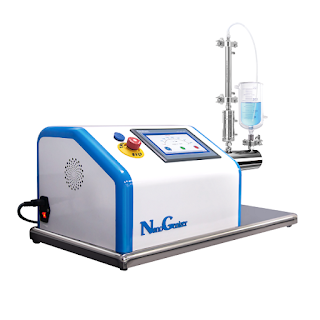Types of High Pressure Homogenizers: An Overview

How are High Pressure Homogenizers are classified? The Classification of High Pressure Homogenizers. High pressure homogenizers can be categorized based on various perspectives, including the power source, pressurization principle, and the design and structure of interaction chambers. High pressure homogenizers: Classification 1. b y energy source Electric Electric homogenizers are powered by an electric motor. This category of homogenizer can be further subdivided into two types: direct-drive and intensifier. Electric high pressure homogenizer with intensifier Direct-drive type: The motor drives the crankshaft to move the plunger back and forth, directly pressurizing the material. Multiple plungers in the crankshaft work together to produce constant pressure and a high flow rate; large quantities of materials are required to produce the constant pressure. To drive the crankshaft, the motor requires a multi-stage gear reductio...




